Areas are used to add content information to your game world using Area components.
Area Settings #
The area settings define some basic settings regarding areas. They can be found in Game > Area Settings & Types > General Settings.
Set up how area notifications are shown, e.g. if they’re shown every time the player enters an area or only the first time per area.
Area Notification #
Define how area notifications will look like.
Learn more about notifications in this documentation.
New Area Notification #
Optionally show a different notification when entering a new area.
The new area notification is only available when not using Show Once.
Area Types #
Area types are used to organize areas by separating them into different types.
You’ll mainly use them to filter areas in the editor and bestiary entries and teleports in in-game menus (menu screens). Area types can be sub-types of other area types for a more detailed organization.
Area types are set up in Game > Area Settings & Types.
Areas #
Areas mainly consist of content information (e.g. name, description, etc.) and are used to add that information to your game world.
Areas are set up in Game > Areas.
UI #
Define UI related settings for the area.
Portraits #
Add portraits to area and display them in menu screens.
Information Overrides #
Areas can override the default notifications.
Using Areas #
Areas are used to set the current area the player is in.
You can display the current area using text codes, e.g. use <area.current.name> to display the current area’s name.
Area Component #
The Area component is used to add areas to your game world.
Area components are interactions, i.e. they support all the available start types. E.g. entering a new area can be started by entering the area’s trigger (collider with Is Trigger enabled) or interacting with it.
When the player interacts with it, the current area will be changed, displaying the area notifications based on your setup.
Schematics #
Schematics can change the current area using the Change Area node.
Teleports #
Teleports can be used to create fast traveling in your game. They are set up in Game > Teleports.
Teleports use area types for sorting in menu screens and the editor.
Target Scene #
Teleports can define multiple target scenes.
Each target defines a scene and where to spawn the player (e.g. via spawn points). When a teleport is used, one of the defined target scenes is used randomly.
Availability Conditions #
A teleports availability can depend on defined conditions, e.g. the player’s combatant status or variable conditions.
The conditions defined must be valid to list the teleport in teleport choice dialogues.
UI #
Define UI related settings for the teleport.
Screen Fade #
Teleports can optionally override the default screen fading.
Portraits #
Add portraits to teleport and display them in menu screens.
Using Teleports #
Teleports can be used in different ways.
Menu Screens #
The Teleport menu part in menu screens will list all available teleports (based on the availability conditions).
The teleports can be separated by their area types.
The Teleport menu part can either directly use the teleport, or use a schematic with the selected teleport available as selected data via the selected key action. This can be used to e.g. animate the teleportation.
Schematics #
Schematics can use a Teleport To node to directly use a teleport – either a defined teleport or one stored in selected data.
The Teleport Choice node displays a choice dialogue with the available teleports.





